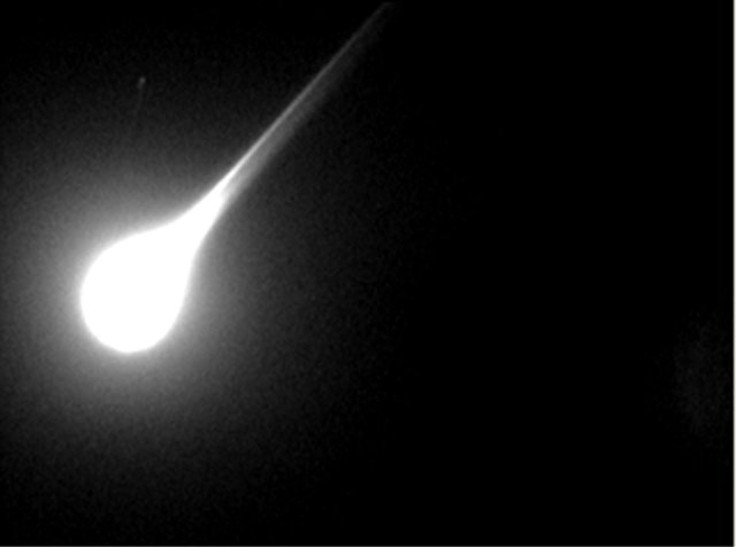Meteorite Fireball ‘As Bright As The Moon’ Spotted Over Lake Huron

KEY POINTS
- A bright fireball appeared over Lake Huron
- Eyewitnesses said the fireball was as bright as the moon
- The fireball was caused by a cluster of meteorites
A bright fireball was spotted streaking across the night sky over Lake Huron. According to astronomers, the bright object was most likely caused by a cluster of meteorites that burned up in Earth’s atmosphere.
The fireball incident occurred on Jan. 22 over Lake Huron, which is bordered by the Canadian province of Ontario on the north and east, and by the state of Michigan on the south and west.
The image of the bright streaking fireball was captured on film by various observatories in Canada including the Western University in London, Ontario. Based on the images, the object appeared as a faint sphere in the sky before glowing into a bright fireball.
According to reports, the fireball flew across the sky before hitting the lake. Some of the eyewitnesses who spotted the fireball said it was as bright as the Moon.
Professor Peter Brown of the physics and astronomy department of the Western University, posted a series of tweets to share images of the fireball. One of these includes a short video of the fireball which was captured using an experimental meteor tracking system based in Tavistock, Ontario.
Yet another capture of the Kintail fireball, this time with an experimental meteor camera system near Tavistock, ON based on https://t.co/JMV1A8Nciu @westernu @IMOmeteors @amsmeteors #fireball #toomanymeteorcameras pic.twitter.com/ZVtQ3aOqd0
— Peter Brown (@pgbrown) January 23, 2020
Brown labeled the bright object as the Kintail fireball, which refers to the town beside the lake where it crossed. Based on the images captured by observatories, Brown noted that the fireball was most likely caused by a cluster of meteorites that were about as big as softballs.
After tracking the trajectory of the fireball, the professor noted that the meteorites originated from the asteroid belt.
“Kintail fireball orbit from last night place origins firmly from the asteroid belt. The initial mass was somewhere between a few to ten kilograms - softball sized,” Brown posted. “Not quite as bright as the full moon.”
The Kintail fireball is the latest cosmic object to fly over Ontario. In July last year, a fireball was spotted flying across the sky over the province. Due to the angle of the fireball, Brown, who was also able to observe the event, said that fragments from the cosmic object may have survived and reached the ground.
“This fireball likely dropped a small number of meteorites in the Bancroft area, specifically near the small town of Cardiff,” he said, according to CNN. “We suspect meteorites made it to the ground because the fireball ended very low in the atmosphere.”
© Copyright IBTimes 2024. All rights reserved.





















